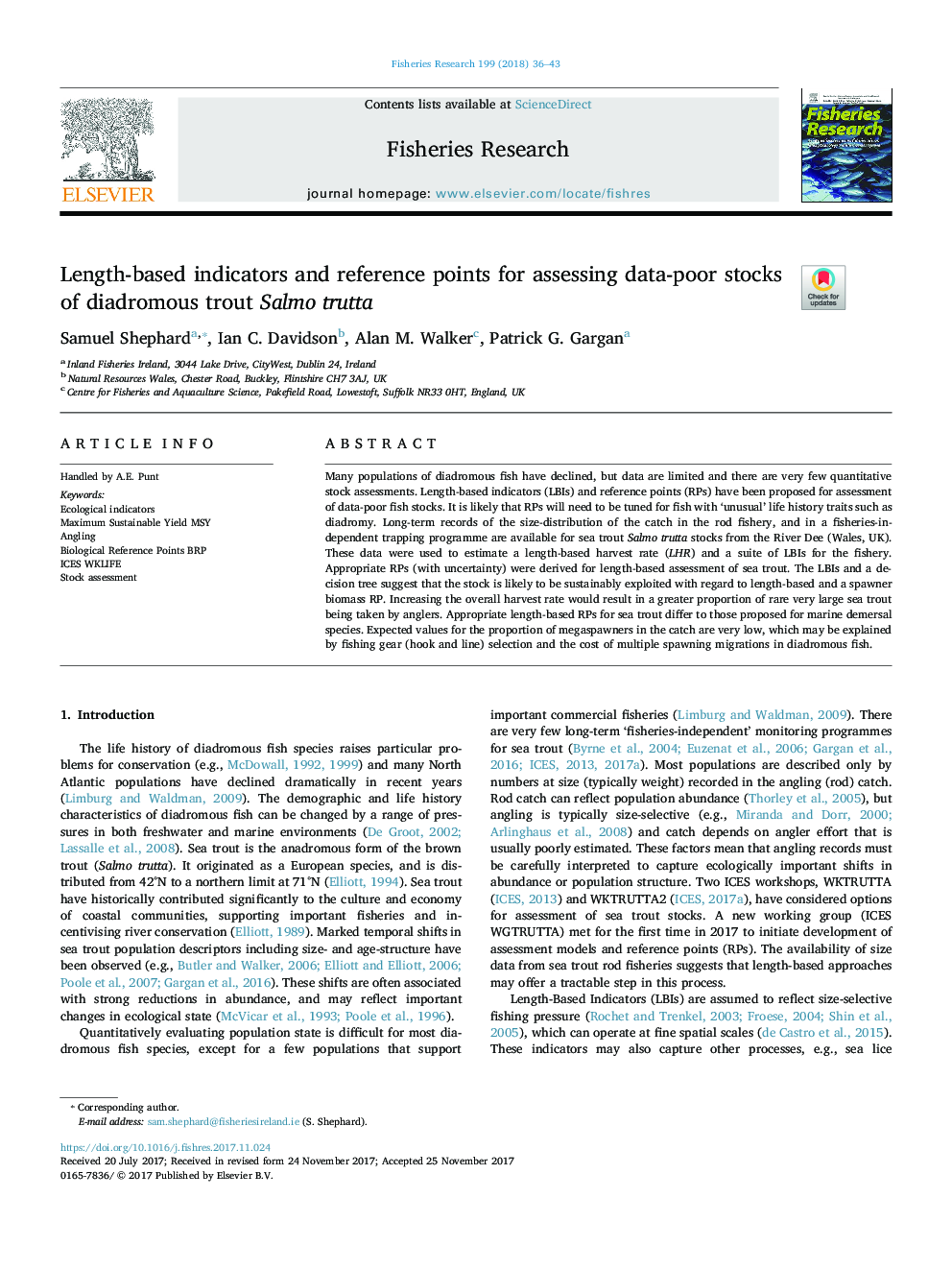| Article ID | Journal | Published Year | Pages | File Type |
|---|---|---|---|---|
| 8885532 | Fisheries Research | 2018 | 8 Pages |
Abstract
Many populations of diadromous fish have declined, but data are limited and there are very few quantitative stock assessments. Length-based indicators (LBIs) and reference points (RPs) have been proposed for assessment of data-poor fish stocks. It is likely that RPs will need to be tuned for fish with 'unusual' life history traits such as diadromy. Long-term records of the size-distribution of the catch in the rod fishery, and in a fisheries-independent trapping programme are available for sea trout Salmo trutta stocks from the River Dee (Wales, UK). These data were used to estimate a length-based harvest rate (LHR) and a suite of LBIs for the fishery. Appropriate RPs (with uncertainty) were derived for length-based assessment of sea trout. The LBIs and a decision tree suggest that the stock is likely to be sustainably exploited with regard to length-based and a spawner biomass RP. Increasing the overall harvest rate would result in a greater proportion of rare very large sea trout being taken by anglers. Appropriate length-based RPs for sea trout differ to those proposed for marine demersal species. Expected values for the proportion of megaspawners in the catch are very low, which may be explained by fishing gear (hook and line) selection and the cost of multiple spawning migrations in diadromous fish.
Related Topics
Life Sciences
Agricultural and Biological Sciences
Aquatic Science
Authors
Samuel Shephard, Ian C. Davidson, Alan M. Walker, Patrick G. Gargan,
